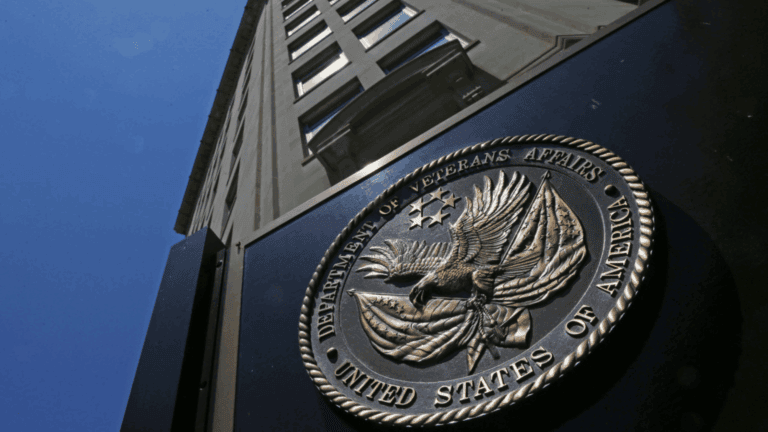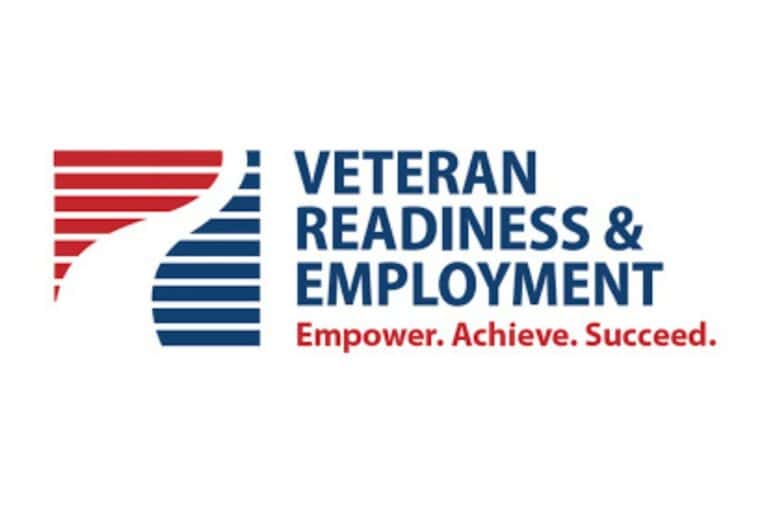VA Appeal Deadlines You Need to Know
VA has deadlines for everything; while they tend to obfuscate deadlines that apply to them, they will hold you to them in the appeals process.
Although there have been extensions during the pandemic years, these appeals deadlines are generally strictly held, so do not assume they will give leeway if they aren’t followed.
First, the VA has two appeals systems: the Legacy Appeals System and the newer Appeals Management Act (AMA) system.
The old Legacy system was a lot like herding cats.
No two regional offices completed the process the same way. They buried appeals in the local regional office frequently without certifying them to the Board resulting in a massive backlog.
Once VA was found out for manipulating the numbers that way, they simply flooded the Board of Veterans Appeals with actual appeals causing a new massive backlog.
The agency created the new AMA system arguing that it would reduce the backlog and help simplify the system. To get the new AMA system, veterans were induced into giving away our rights… you know, because it was too hard for the agency to complete decisions correctly the first time, or the second time, or the third time, resulting in decade old appeals.
Anyway, the new system is great, right?
It started off strong with a multi-option appellate approach designed by lawyers and bureaucrats. So, what could go wrong, right?
After three years of the process being fully adopted, many VSOs claim buyers remorse, noting the system is too complicated. What was once a system where you could appeal by submitting a piece of toilet paper with writing on it was replaced with using mandatory forms, each of which requiring different legal calculus to navigate.
What was once one option was replaced with six options like trying to order a quarter pounder at McDonalds these days.
To get these six new and complicated options for an appeal process, veterans were convinced by their VSO partners to give up certain due process rights. Now, the new appeals process is so confusing that we ended up with confused veterans, confused VSOs, confused VA employees, and a massive backlog of appeals at the Board of Veterans Appeals, again.
What happened?
More government, more money, more problems.
Appeals Modernization Act – Decision Review Request Options
The decision review request system has three primary options with three secondary options if you pick the formal appeal option.
In the new system, the Formal Appeal is also called a Notice of Disagreement, though all three options, Higher-Level Review, Supplemental Claim, and Formal Appeal, are in function each a Notice of Disagreement, in a sense.
The good news is that you have one year from the date of the prior decision to submit your decision review request to preserve your effective date in most instances. That is hopefully enough time to find a competent person to help you appeal.
The bad news is you may need to complete your own law school training to figure out which path is best for you without assistance.
Now, the burden is on the veteran in many ways, especially if pro se, to make sure you file the right appeal using the right form. But again, the good news is you have one year to figure it out or one year to find the right veterans advocate to complete the Decision Review Request for you.
So here is the gist of the process using the new Decision Review Request forms. And as with most things, a veteran can represent themselves pro se. They can also receive representation from a VA-accredited individual.
Supplemental Claim VA Form 20-0995
The Supplemental Claim describe the process and form you can use to file to submit new and relevant evidence. To preserve your effective date, this form with evidence should be submitted within one year from the date of the underlying decision.
This same process can be used for claims older than one year to reopen that claim, but the veteran will usually lose the effective date unless a clear and unmistakable error is found.
The key here is to use the right form and be sure to include the evidence that is new and relevant.
.If you fail to use the right form, you could lose your right to the effective date. Do not use this form if you intend to instead file a Higher-Level Review.
Why? Because you cannot submit new and relevant evidence when using a Higher-Level Review option.
Many veterans mistakenly file claims to reopen using the new claim form VA Form 21-526EZ where the agency will reject the claim for being submitted on the wrong form. This filing error happens all the time, and many veterans miss it.
If the claim was previously submitted and denied in writing, then you must use a Supplemental Claim form with new and relevant evidence. It is a must. New and relevant evidence can be attached or it can already be in the record but posted after the date of the prior decision.
If you are merely seeking an increase of an existing condition that has been service-connected, veterans are encouraged to use the 526EZ. However, some are successful in presenting it using a Supplemental Claim form.
You just need to pay attention to your mail in case VA rejects the claim on the 526EZ in favor of using the Supplemental Claim form for a prior denied claim.
At the time of this writing, the agency is taking 120 days to adjudication a Supplemental Claim.
Higher-Level Review VA Form 20-0996
The Higher-Level Review is a unique bird because you avoid the massive backlog at the Board of Veterans Appeals while also hopefully getting a quick win on the issue to move on with other things in life.
These options are only available within one year of the decision being contested. That means you must file this, and you must be doing it using the right form.
The beauty of the Higher-Level Review is that it locks in the agency on ambiguous facts or arguments where they cannot consider anything new added to the record after the date of the decision.
On the flip side, a veteran cannot take advantage of new evidence that is favorable created in the middle of the pending adjudication of a Higher-Level Review.
For example, let’s say a veteran submits a Higher-Level Review to contest an adverse Veteran Readiness and Employment (VR&E) decision. While waiting for the reviewing official to render a decision, the agency issues an increased disability compensation rating. The reviewing official cannot consider that favorable decision as evidence when completing the Higher-Level Review.
The record is locked in at the time the original decision was made that is being contested. The Higher-Level Review option is useful for VR&E claims because of the high number of pre-decisional due process errors frequently committed by unwitting vocational rehabilitation counselors.
At the time of this writing, the agency is taking 90 to 120 days to decide a Higher-Level Review.
Formal Appeal (Notice of Disagreement) VA Form 10182
The Formal Appeal, also called Notice of Disagreement in parentheticals, is the decision review request that most closely matches the Legacy Appeal of old.
VA will only process a Formal Appeal on the proper form, but it is still on notice even if the wrong form was used.
Anyway, a formal appeal using this form can only be submitted within 1 year from the date of the decision being appealed.
If you are outside the one year period, then the decision is likely final meaning you cannot appeal it using a Formal Appeal.
Instead, you can appeal through the Supplemental Claim route so long as you have new and relevant evidence to Rock’N Roll all over again. It’s like those new Disney movies that keep redoing older, better movies, except hopefully your evidence will be better than the first time around.
If you file a Formal Appeal, you then have to pick one of three lanes within the appeal:
- Direct Review of evidence of record when the decision was made
- Review of new evidence presented within 90 days of submission
- Hearing with new evidence presented within 90 days after hearing
Each of these options has its own unique benefits and risks, so it may be important to talk with a VSO or attorney who understands how appeals work.
Part of the reason getting legal advice may be important is that some cases may be impossible to win at the agency because of some kind of demonic internal policy that requires denials like many of the old herbicide claims. If you have a case where a law or policy needs to be challenged, a licensed attorney accredited by VA is likely a superior choice.
Accredited attorneys will know how to set up an appeal for a potential challenge in a court later whether it be at the US Court of Appeals for Veterans Claims, US Court of Appeals for the Federal Circuit, or the US Supreme Court.
I would not rely on pro se skills or the skills of a local County Veteran Service Officer (CVSO) to set up an appeal at any court, but that’s my two cents.
Appeal to US Court of Appeals for Veterans Claims
This is the big time.
This is an Article I appellate court with exclusive jurisdiction to review decisions of the Board of Veterans Appeals.
You can appeal to the US Court of Appeals for Veterans Claims (CAVC) within 120 days from the date of the decision. A veteran can represent themselves, by a non-attorney representative admitted to the Court, or by an admitted attorney.
This option usually takes 1 to 3 years to sort out and is uber formal compared to the other options within the agency. The CAVC is not part of VA, and its rules are separate. Only individuals who are admitted to the CAVC can provide representation there.
CAVC has prescribed forms to submit an appeal including the Notice of Appeal. This document must be timely submitted to the CAVC within 120 days from the decision date of the Board of Veterans Appeals decision in order to be considered timely. If you go past the deadline, the CAVC will likely not allow your appeal to proceed.
Once an appeal is docketed, the VA Office of General Counsel (OGC) will represent the agency against the veteran. Their attorneys will provide the Court with a copy of the Board decision. Ater a couple months, the OGC will provide the veteran or her attorney with a copy of the Record Before the Agency (RBA). This is basically the Claims File from the Board.
Once the veteran has a chance to review the RBA, the Court will order a Rule 33 meeting at least for veterans who are represented. This R33 meeting consists of opposing counsel negotiating whether the matter can be settled or remanded for correction without further litigation.
If the matter cannot be resolved, the parties will submit briefs to the Court to argue their positions. Usually, the outcome if favorable to the veteran is a remand to the Board for correction of a reasons and bases error, but not always.
If the outcome is negative, the veteran can appeal to the US Court of Appeals for the Federal Circuit.
US Court of Appeals for the Federal Circuit
Like CAVC, this Court, commonly called the Federal Circuit or Fed Cir, is unique.
The Federal Circuit is an Article III court created in 1982
Unlike CAVC, which specifically addresses veterans’ benefits appeals, only, the Federal Circuit addresses appeals of all kinds including patent disputes, trade disputes, and a variety of other issues involving adjudications by the federal government.
Only attorneys can provide representation at the Federal Circuit. Its filing requirements are specific and must be followed, period.
It is not enough to have good facts or good law. Both must be articulated correctly to not get rejected by the Court, and they must be written well to be persuasive to the judges, especially because you are going against the Department of Justice attorneys.
Cases that are decided by this Court may be appealed to the US Supreme Court, but the Supreme Court may not accept the case for a variety of reasons.
A veteran can file an appeal pro se to this Court or through counsel. Generally, a notice of appeal must be filed at the Court within 60 days of the decision or judgment being appealed.
US Supreme Court
The US Supreme Court is the supreme court of the United States.
Its jurisdiction was created by the US Constitution under Article III, Section II. Decisions made by the justices of this Court have precedence over the decisions by any lower court. The Court has discretion over the cases it will hear that are presented following an appeal from the Federal Circuit. Cases that are rejected generally become final.
The Supreme Court, or SCOTUS, does not hear many cases each year, meaning the number of veterans cases that make the docket are few but impactful. Most veterans whose cases are accepted for adjudication at the Court are usually the result of years of litigation at the hands of very experienced legal counsel.
In order to be considered, a veteran’s counsel must file a petition for a Writ of Certiorari. This petition is a request for the Court to review a lower court’s decision. It must be filed within 90 days of the lower court’s decision or judgment to be considered.
Investigation into Appeals Timeframes
Timelines for appeals, and numerous other VA issues, have been examined by Congress and the United States Government Accountability Office (GAO) regularly. A 2017 report from the GAO titled “VA Disability Benefits: Additional Planning Would Enhance Efforts to Improve the Timeliness of Appeals Decisions” really rolls off the tongue and describes the backlog of claims the VA is addressing.
The GAO report describes the timelines of VA appeals as follows:
· 419 days average between the VA receiving the NOD and issuing the SOC.
· 537 days average between the receipt of an appeal and the Board to certify that appeal.
· 222 days average between the Board certifying the appeal they received and placing the appeal on the Board’s docket.
· 270 days, average, between the appeal reaching the docket to the Board decision on the appeal.
This glacial timeline was being addressed with the Appeals Reform Claims and Appeals Process, with the goal of overall wait times dropping from 5 years to 3 years to a lightning-fast response.
For Appeals Reform Claims, the agency determined three remedies for disagreeing with the VA’s decisions: the Higher-Level Review (HLR) Lane, the Supplemental Claim lane, and the Notice of Disagreement lane (Board Decision).
Be aware:
The VA has no requirements or time limits on any of their responses, so the time limits are for you only.





Just imagine the millions they’ve fucked over the last 40 years and now imagine the tens of thousands of people they fuck every year. People rotting on the couch on benefits wasting away from lack of care. Totally insane and human rights violation if they advertise themselves as a healthcare system. The politics are killing people